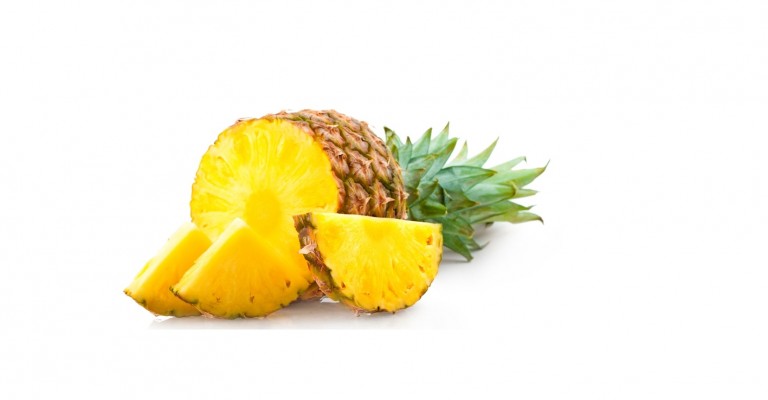The symbol and epitome of a tropical delight, which can conjure images of an island paradise.
It's actually a member of the bromeliade family where the fruit is the result of a cluster of flowering or coalesced berries. The name came about with reference and similarity to the pine cone.
It takes a considerable amount of time to produce, taking 2-3 years to harvest a mature fruit. When picked, the fruit will not ripen further after harvest and in storage, and is very susceptible to bruising and rapid breakdown. It's often believed that the best fruit to choose is when the skin is a yellow/orange colour, however this is incorrect. A green skinned fruit can just as likely be ripe.
There are many versatile uses for the sweet flesh from eating fresh, cooking, juicing, preserving, desserts, and is most convenient from a can but can often have additional sugar and preservatives added.
Production is usually year round in most subtropical and tropical climates
How to prepare
Trim off the leafy top and base. Stand the fruit upright and with a sharp knife cut away verticle sections of the skin turning as you go. You'll need to cut in as deep as necessary to remove the dark brown 'eyes'. There is a hard central core that also should be removed. In most kitchen shops, you can find gadgets specifically for peeling and coring pineapples in one simple step.
Then cut into rings, in half or cube into small wedged sections.
TIP: Raw pineapples contain the enzyme Bromelain, which when combining with dairy products makes them watery, and further will hinder the setting of gelatin based recipes. All can be rectified by cooking the fruit briefly before use to break down the enzyme.
Buyer's and storage guide
In reminding further, the fruit skin colour has little to do with ripeness. You want to be able to smell a slightly sweet aroma and there should be some slight give at each end fo the fruit.
Typically the fruit are sold with their leafy top on, and it can also aid in determining ripeness when the younger leaves can be plucked out effortlessly. After cutting off the leafy top, it is possible to plant out in the garden or a pot for it to regrow. This can be fun for kids, but requires patience as it'll likely be 3 years or more to see a fruit. More often now though to protect variety breeding, the fruits are being sold with the top already removed.
Storage is limited and a fresh pineapple is best consumed within 2-3 days, and not advisable to put in the refrigerator.
Serving
- Slices can be added to the barbeque and enjoyed on your burger
- A must to create home made hawaiian pizza with some fresh ham
- Prepared into a coleslaw for a twist or combined with other fruit in a summer fruit salad; use a shelled out half with the skin and top intact for added visual appeal
- Often tossed through a stir fry with other vegetables, for a quick shared meal
- Blended with some oranges, carrots, ginger, mint and crushed ice for a refreshing thirst quenching drink; try also with soda water
